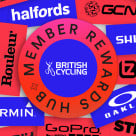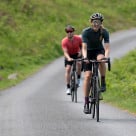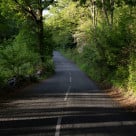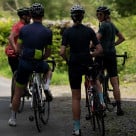![]() Follow britishcycling.org.uk on
Follow britishcycling.org.uk on ![]()
![]()
![]()
![]()
Commuting Tips: Towpath Etiquette
7th June 2010 | Eddie Allen | More Commuting Tips
A while back we looked at the Two Tings campaign, a British Waterways initiative which aims to encourage cyclists to use the good old bicycle bell to alert other towpath users of their presence.
I use canal towpaths as an integral part of my daily commute and they're superb resource of traffic-free transit that we're lucky to have a right to use. But with rights come responsibilities and it's clear that there's an unsaid towpath etiquette out there. Whilst British Waterways have their own, official ‘path rules, I have my own:
If you're approaching from behind, use the bell: I find that the best range to deploy the old dinger is about 10 yards back. Ghosting-in behind walkers or joggers and dinging from point-blank range is the aural equivalent of shoulder barging them out of the way. When you do pass, pass on the right, like you would overtake on the road. It just makes sense (at least in the UK).
If you're approaching other towpath users ‘head on'. Slow down, be prepared to stop, smile and pass on the left (again just like the road). In a carefully controlled long term study (OK, it was one evening on the way home from work, but stay with me) I deliberately went for the right, rather than the left and on each occasion, it resulted in the oncoming path user and I doing that timeless ‘side step double dodge', seen on pavements and in supermarket aisles the world over.
Under bridges, around corners and other blind spots - deploy the bell, and slow down. You can easily erode the good will of other users by barging silently around a blind corner and screeching to a halt, millimetres away from a granddad and grandma pushing their grandchild in a buggy (ask me how I know).
Anglers can present their own peculiar set of challenges, especially those endowed with ultra long perch poles. My favoured technique is to slow down to a walking pace and deliver a ‘good morning/afternoon/evening' in the style of a country gent. Running over someone's maggots or knocking the North West perch champion into the canal just isn't good form.
Other cyclists - if approaching head on, slow down, or you'll be looking at a closing speed of over 30mph on a path less than 5 feet wide. Go ‘offside to offside' and give your peer than knowing nod. Most cyclists are anti social types so ‘good morning' may not do you any favours.
And finally, wildfowl. Herons are no bother, despite their initially alarming dimesions. The iconic, majestic heron will always give you the impression that you're ready for a close encounter, only to flap away effortlessly at the last moment. Ducks will generally waddle out of the way, apparently nonchalant, but wracked with anxiety underneath the downy feathers and behind those inscrutable eyes. However, the last word must go to the goose, the canal-side creature most likely to get an ASBO. Again, my long term study has found that geese will attack you 80 percent of the time, so give them a wide berth and steel yourself for the inevitable ‘hiss and peck'.
So there you are. Go forth, canal commuter, well-versed in the ways of the water.





